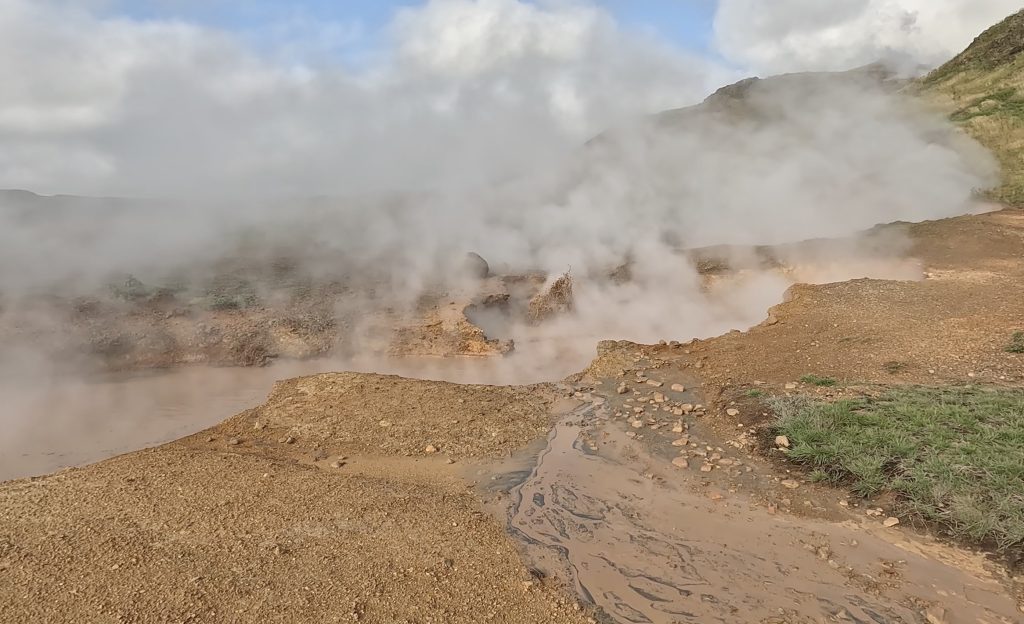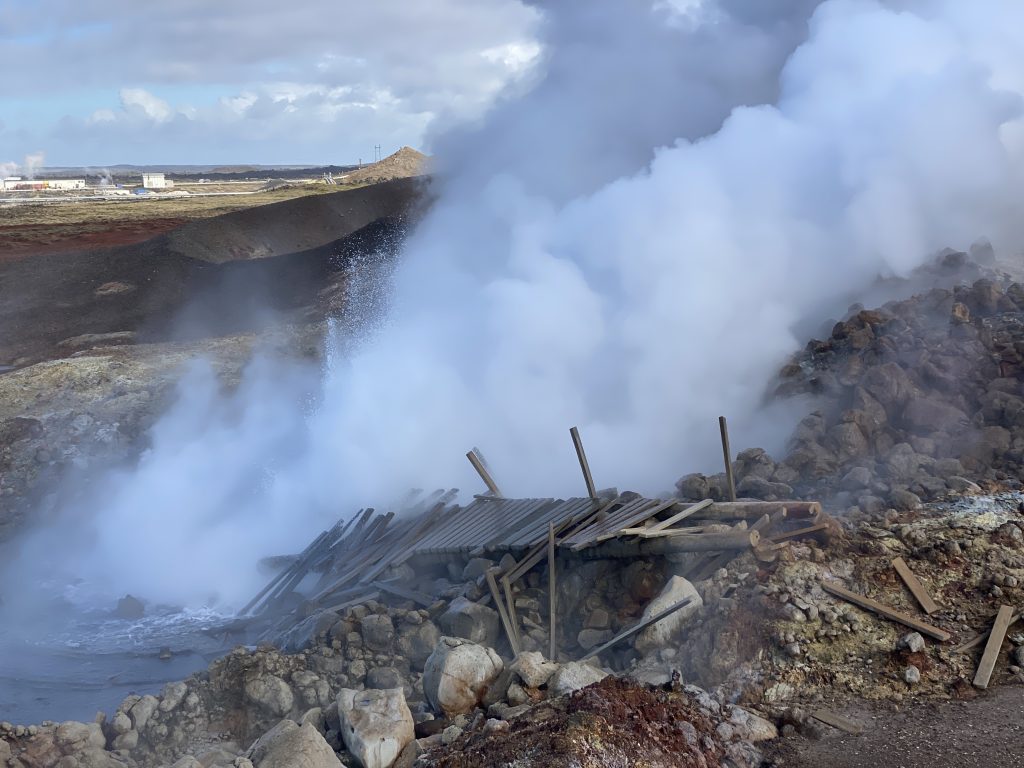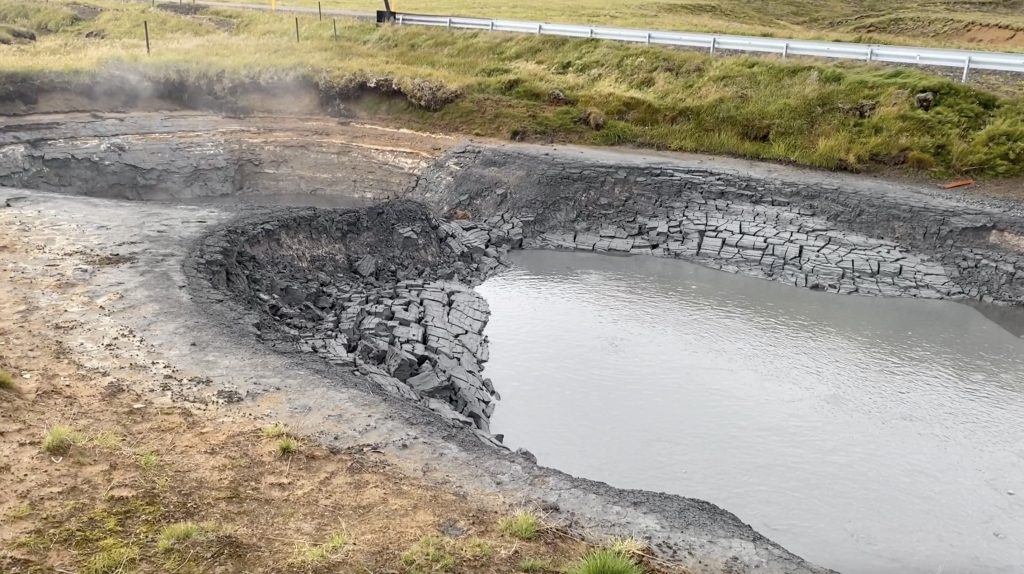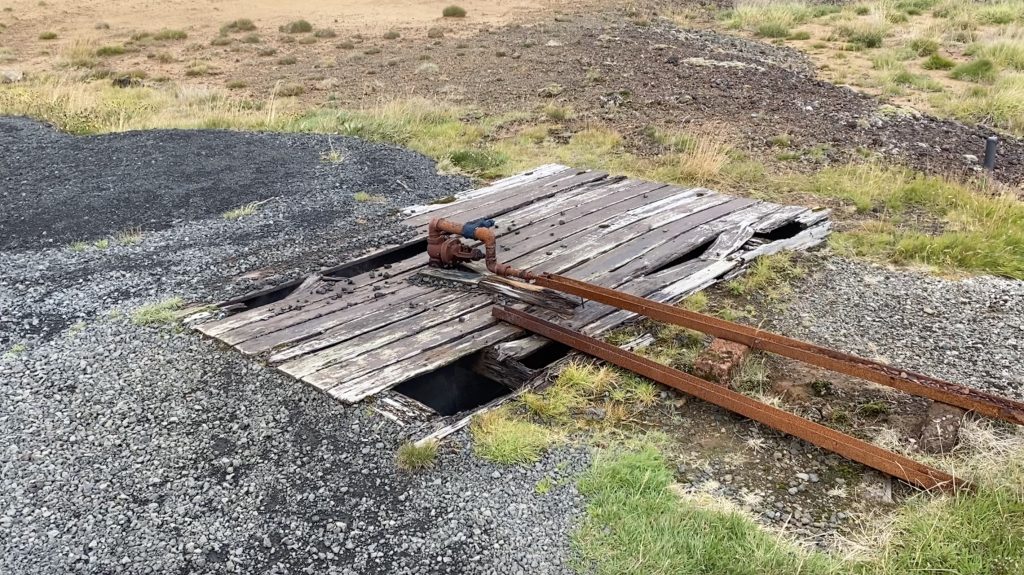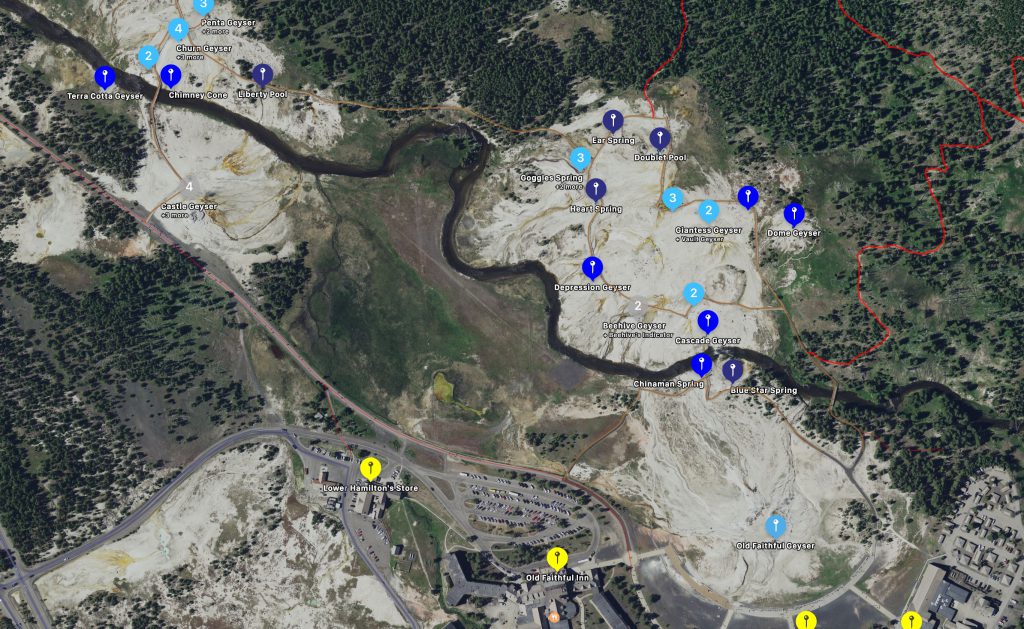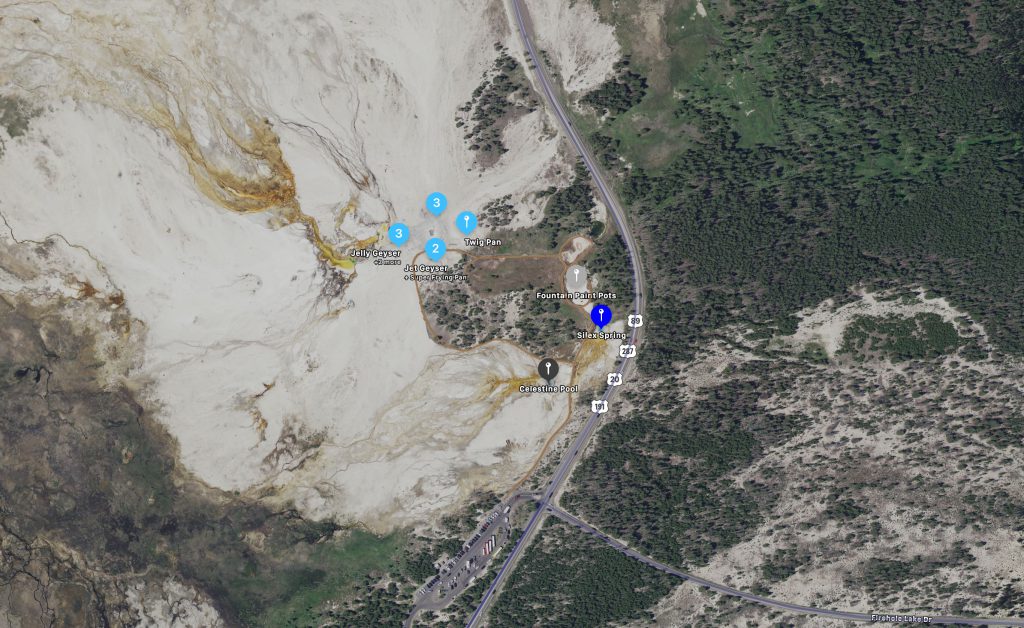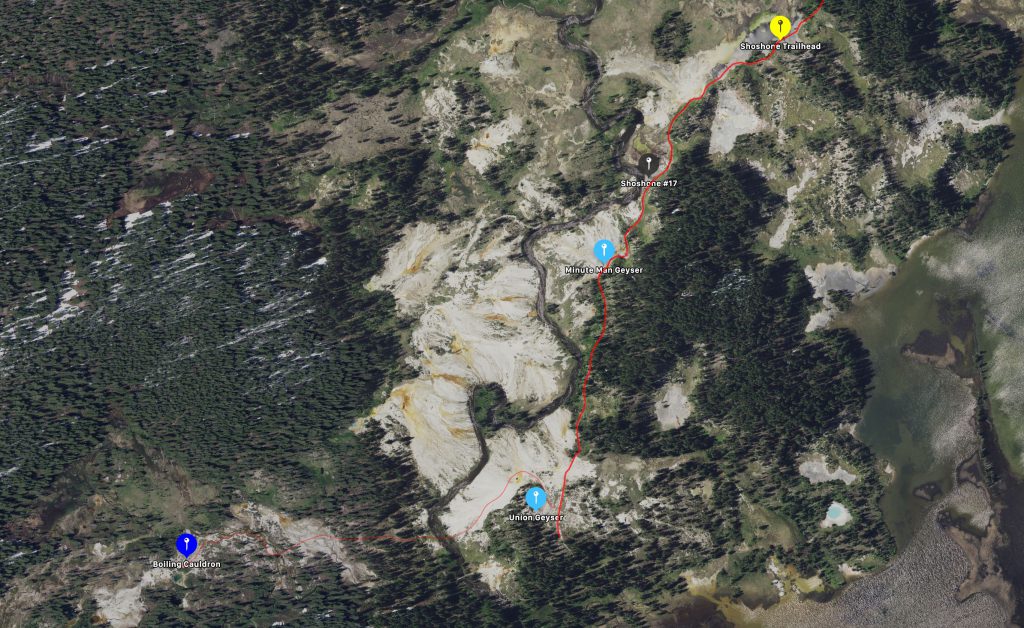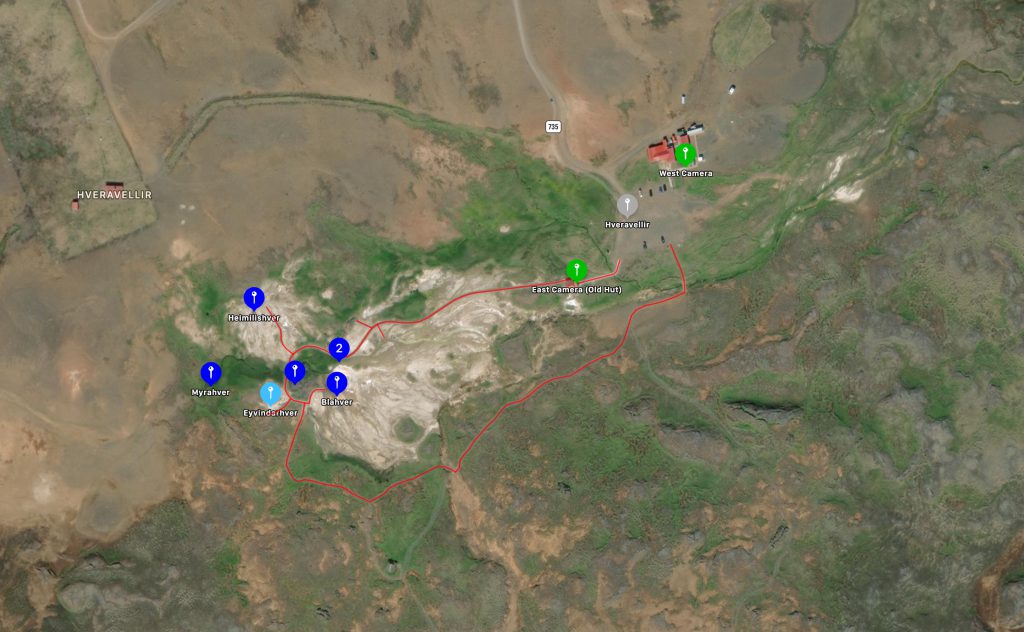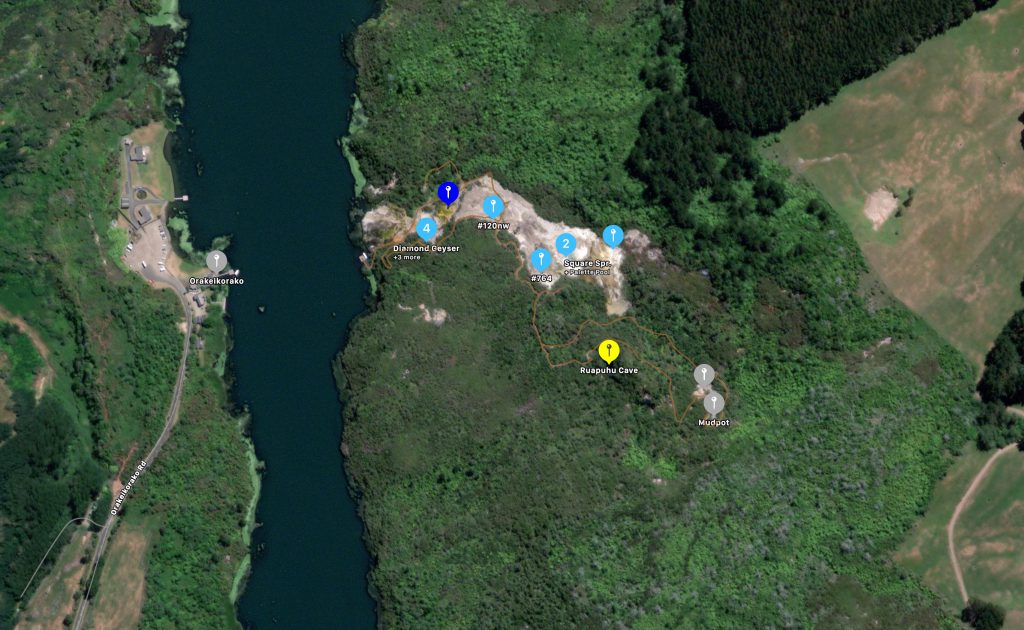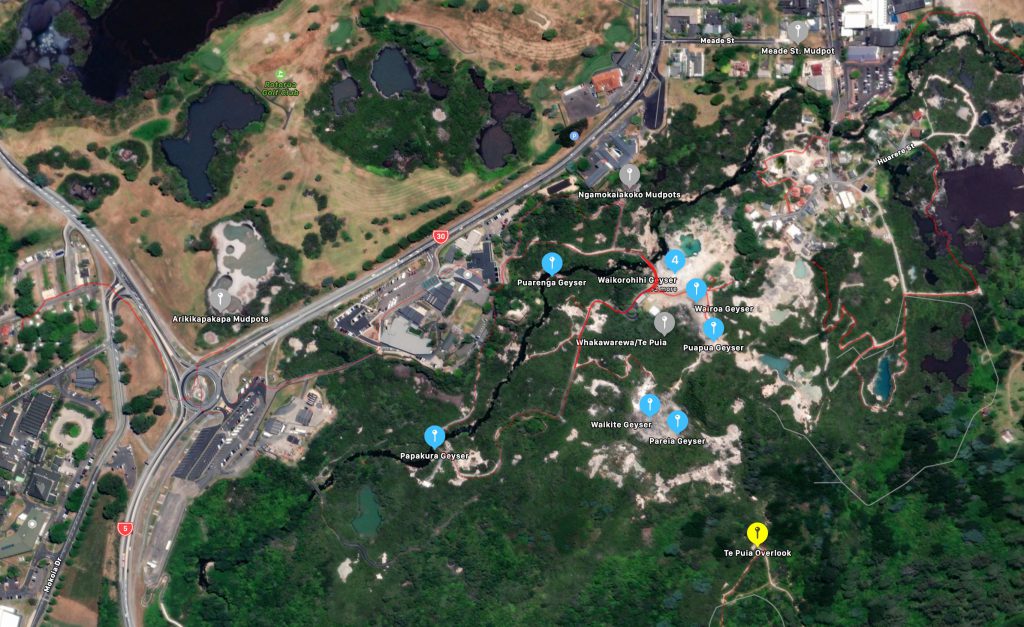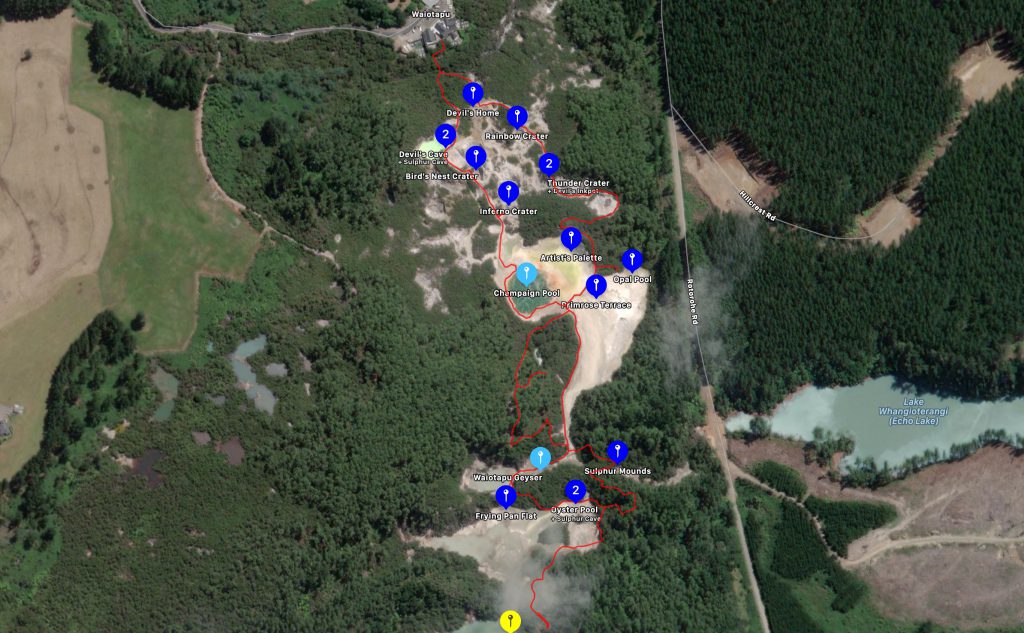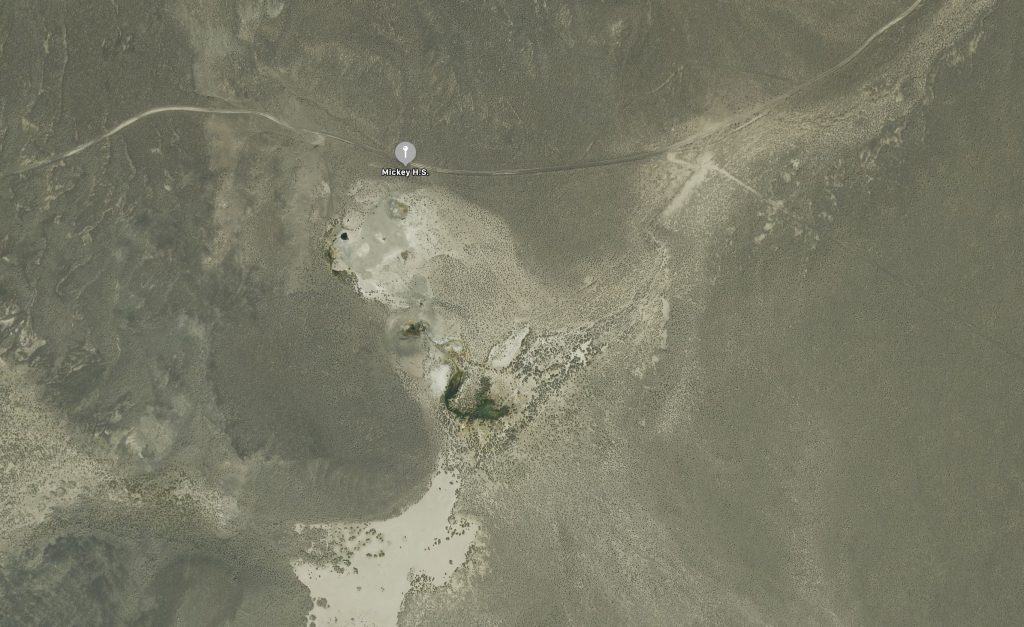Got a late start to another busy day. Arrived at Haukadulur and parked in the northeast parking area, away from the tourist traps and bus parking areas. Almost immediately saw an eruption of Strokkur from our car. We got long series of eruptions, much on video.
A few years back I came across a recent paper published in Geophysical Research Letter titled "Eruption Interval Monitoring at Strokkur Geyser, Iceland". One of the most interesting pieces of information in it is that over the course of a year, their monitoring recorded 73466 eruptions, and that 23331 of those eruptions had more than one burst. There was even a single six burst eruption recorded. (Based on the statistical model, a seven burst eruption should also occur ever 12 years or so.) Also, the time between eruptions correlated to the number of bursts, but not to the number of bursts in a subsequent eruption.
We saw mostly one burst eruptions from Strokkur. There were a few with two bursts, with the second coming as soon as the first burst completed, to as much as 20 seconds later. (It's annoying when you stop the video only to miss the second burst becuase it took so long.) We only saw one three burst during the day, which based on the previously mentioned paper, was expected for the amount of time we were there.
The sizes of the eruptions varied considerably. Up close, some were just "tall." From a distance, I think we saw several that were over 30 meters high. On the otherhand, some were disappointingly small. In one case, I doubt the height was over 4 meters. Looked like a Grand Boop. When there were two bursts, one of the bursts could be tall, but not both, unless it was one of the cases when it was more like a second jet developing through the first jet.
Intervals ranged from two to seven minutes after a one burst eruption, but most of those were three minutes or less. If there was a second burst, then the interval lenghtened out to seven to ten minutes.
Geysir was quietly overflowing. What was surprising is that it is developing a shelf along the edge of the crater, and the overflow terrace has developed scallops well down the hillside.
Didn't see much else. Alfaauga was active, and we saw a few eruptions. The pool over the vent fluctuates until boiling starts on the side, which leads into an eruption. The durations were from over two minutes (it was in eruption) to a single burst. Didn't try to get any intervals, as it is located on the main path between the buildings and Strokkur, which is a crowded, busy area. (And Strokkur had our attention.)
Littli and Smiður were perpetually spouting to about a meter, and up at the top of the hill, Haìhver, while spouting continuously, did seem to vary from almost quiet to bursting well over a meter high.
We finally left after over five hours and 52 eruptions of Strokkur seen.
Arrived at Hveravellir about an hour and a half before it got dark, and after taking care of necessities like eating and checking in, had maybe half an hour of light to do a quick investigation. Nothing there erupts to much more than a meter, and the intervals are extremely short, but in that time saw close to two dozen eruptive vents and features, including at least three or four geysers. There was one feature erupting about every minute, draining after the eruption. The pool of Rauðihver would pulsate over the vent, then have a couple or so bursts. The tallest feature was a pool south from Öskurhóll, which was splashing almost two meters high at times. Should have plenty of time to investigate these further tomorrow.




